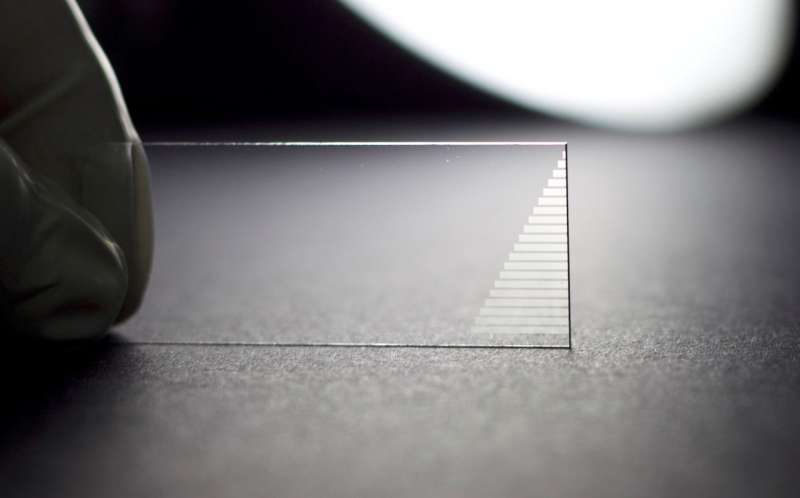May 14, 2018 report
A chip that allows for two-dimensional quantum walks

A team of researchers from Shanghai Jiao Tong University and the University of Science and Technology of China has developed a chip that allows for two-dimensional quantum walks of single photons on a physical device. In their paper published on the open access site, Science Advances the group describes the chip and why they believe developing it was important.
Quantum walks are the quantum version of classical random walks, which are a mathematical means for describing a natural random walk, e.g., simply wandering around randomly. To describe such walks, mathematicians and computer scientists use probability distribution grids that show a current position and possible next steps. Quantum walks are used to build models that depict randomly grown, sophisticated and complex networks such as the human neural network. They can also be used to create networks for actual use in applications, and might one day be used in quantum-based robots.
As the researchers note, a quantum computer should provide exponential advantages over classical systems due to their nature. To that end, scientists have been working to implement quantum walks in a physical machine as part of developing a truly useful quantum computer. In this new effort, the researchers report that they have developed a chip that carries out quantum walks on a two-dimensional 49x49 grid—the largest created so far by any team.
The three-dimensional chip, the team reports, was created using a technique called femtosecond writing. It uses the external geometry of photonic waveguide arrays as a means for carrying out the quantum walks using a single photon. They note also that they tested the chip by observing patterns and variance profiles and comparing them to simulation studies. They suggest further that in addition to making progress toward a truly useful quantum computer, the chip could also be used to boost the performance of analog quantum computing or quantum simulators.
If researchers can create quantum computers with very large, or even unlimited size grids, it might be possible to create and use networks as complex as the human nervous system.

More information: Hao Tang et al. Experimental two-dimensional quantum walk on a photonic chip, Science Advances (2018). DOI: 10.1126/sciadv.aat3174
Abstract
Quantum walks, in virtue of the coherent superposition and quantum interference, have exponential superiority over their classical counterpart in applications of quantum searching and quantum simulation. The quantum-enhanced power is highly related to the state space of quantum walks, which can be expanded by enlarging the photon number and/or the dimensions of the evolution network, but the former is considerably challenging due to probabilistic generation of single photons and multiplicative loss. We demonstrate a two-dimensional continuous-time quantum walk by using the external geometry of photonic waveguide arrays, rather than the inner degree of freedoms of photons. Using femtosecond laser direct writing, we construct a large-scale three-dimensional structure that forms a two-dimensional lattice with up to 49 × 49 nodes on a photonic chip. We demonstrate spatial two-dimensional quantum walks using heralded single photons and single photon–level imaging. We analyze the quantum transport properties via observing the ballistic evolution pattern and the variance profile, which agree well with simulation results. We further reveal the transient nature that is the unique feature for quantum walks of beyond one dimension. An architecture that allows a quantum walk to freely evolve in all directions and at a large scale, combining with defect and disorder control, may bring up powerful and versatile quantum walk machines for classically intractable problems.
Journal information: Science Advances
© 2018 Phys.org



















